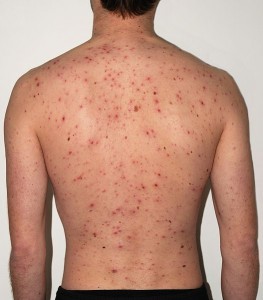Difference Between Chicken pox and Small pox

Many of us have suffered from chicken pox as a child. Both chicken pox and small pox are viral infections but small pox is often fatal. Chicken pox is caused by the Varicella Zoster virus which belongs to the Herpes virus family whereas small pox is caused by the Variola virus. Chicken pox is also called as varicella and small pox as variola. Chicken pox is still rampant in children and immuno-compromised people whereas small pox has been eradicated totally since many years. Transmission of both is by droplet infection (sneezing and coughing in open) and by direct contact with a skin lesion of an infected person.
The symptoms of chicken pox develop after 14 to 21 days of incubation period (period of infection without any visible symptoms). Very mild symptoms like a runny nose or cough occur for 2 to 3 days and then a rash develops. In chicken pox, the skin lesions first develop on the trunk, back and then few more slowly appear over the limbs. Lesions range from being red and small to huge vesicles which are fluid filled and have a ‘dew-drop on a rose petal’ like appearance because of the blister on underlying red skin. The most characteristic feature of chicken pox lesions is that all stages of the rash (boil, blister, scab) can be seen in a single patch of skin. With each spike of fever, a crop of rashes bursts forth; they then mature at different times going from a rash, to boil to blister and finally a scab. The scabs dry and fall off within 2 weeks. The lesions of chicken pox are very itchy and leave marks on skin if the vesicles are broken. This can also lead to a secondary bacterial infection of the burst boil and is the most common complication of chicken pox.
In small pox the skin lesions develop more so over hands, legs and face and very few appear on the trunk. The lesions are all of almost the same size and mature uniformly at the same time. The lesions begin as red, elevated rashes maturing to water-filled blisters and ending as pus-filled blobs. Typically, the lesions are small raised spots with opaque fluid and a depression in the middle. Complications of small pox were very fatal. Blindness, ulceration of cornea, deformities of limb and shock in case of infection with hemorrhagic variety of small pox were common. Lesions of small pox are the maximum on the face and the palm and soles. Chicken pox lesions are never seen on the palms and soles. The lesions of small pox healed with severe and permanent scarring of the involved area posing severe cosmetic troubles.
On being infected with either of these, there is a lifelong immunity to a re-infection. There is no specific treatment for both the infections. Both chicken pox and small pox are self-limiting, lasting about 2-3 weeks needing only relief for the fever and itchiness. If vaccination is given during the beginning of the disease then the course of disease shortens. Also the complications can be avoided this way. International health programs by WHO have eradicated small pox from earth but chicken pox is still fairly common in developing countries.
Summary: Though small pox and chicken pox are similar in many aspects they are different and can be diagnosed by the characteristic appearances of rashes and then dealt with accordingly. Doctors must be consulted in every case to avoid serious complications.
- Difference Between an Atomic Bomb and a Hydrogen Bomb - May 23, 2015
- Difference Between Multiplexer and Decoder - May 21, 2015
- Difference Between Chicken pox and Small pox - June 3, 2014

Thanks for helping…..